View basket (0 items $0.00)
Error message
- Notice: unserialize(): Error at offset 5 of 154 bytes in variable_initialize() (line 1202 of /home/dh_6hcdc2/yogau.online/docroot/includes/bootstrap.inc).
- The file could not be created.
- The file could not be created.
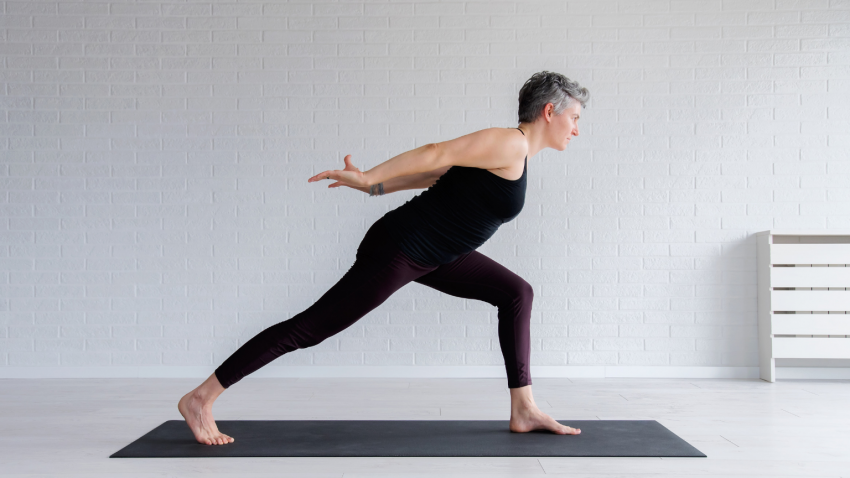
Beat The Chronological Clock: 8 Steps Toward Vibrant Aging With Yoga
We like to blame a lot of things on aging: our lack of energy, our stiff joints, and sore muscles, our rounded shoulders, and our expanding waistlines.
But are these changes in our body and functioning inevitable, or are they a result of gradual changes in our lifestyle as we get older? Do our lifestyles change, and our bodies slow down simply because we expect them to?
I am a passionate advocate for healthy living and taking responsibility for your health throughout your life. As I started doing research for this post, I realized that even I had some misconceptions about the aging process. I believed that a slowing metabolism, a decrease in muscle mass and bone density, and changes in sleep patterns are inevitable to a certain degree, no matter how well you take care of yourself.
It turns out there isn’t much research to support these beliefs. Most research points in the opposite direction: that maintaining your level of physical activity will allow you to maintain your metabolism, body weight, muscle mass, bone density, and energy level as you age.
This is good news. But—and this is a big BUT—as adults, we face significant challenges that make it difficult to maintain the activity level we had when we were younger.
In this post, I’ll talk about the roles that lifestyle changes, expectations, stress, and an increase in muscle tension and pain play in the gradual decrease of physical activity, slowing of our metabolism, and the resulting aging process.
Your aging process is far more voluntary—under your control—than you realize. Here are eight steps for living well for the rest of your life and how Yoga can play a big role in getting you there:
1. Focus on Your Metabolism. 
We think of metabolism as being how quickly we burn the calories we eat, but it’s far more than that. Metabolism is the sum of chemical processes that occur within our body by which our cells are created, maintained, and broken down, and by which energy is produced.
So, our metabolism is responsible for building and maintaining all the cells in our entire bodies (including muscle and bone tissue), for determining where and how much fat gets stored or burned, and for turning food into fuel for our cells.
We want our metabolism to be fast because when the cells of our body are created and able to turn over more efficiently, we’re healthier. Keeping our metabolism high allows us to maintain healthy levels of muscle mass, body fat, and bone density throughout our lives.
Your metabolism is under your control. Yes, you may be genetically predisposed to have a slightly slower metabolism than your skinny friend—but you can easily speed up your metabolism by working out regularly and making sure to eat enough. Your metabolism is far more dependent on your exercise and eating habits than on your genetics.
Wait, did I just say eating enough? Yes, when you eat too few calories or fast regularly, you send your body into starvation mode. Your metabolism will slow down to conserve energy, and your body will burn proteins within your muscle tissue as an energy source. This reduces your muscle mass, decreases your energy and strength, and slows your metabolism further.
Many older adults eat less because they feel that their caloric needs have changed, and their appetites have decreased. This is the direct effect of their decreased activity level resulting in slowed metabolism—not of the natural aging process. And unfortunately, not eating enough means these adults aren’t taking in the nutrients and calories their bodies need to maintain their metabolism, muscle mass, and bone tissue.
Yoga Tools To Get You There: Adding a practice of mindfulness to the process of feeding your body can be a life-changer. Mindful consuming–paying attention to what and how you put into your body and the environment you create for nurturing your whole self–is a pathway to healthier choices. Once you cultivate an understanding of your hunger cues, it's easier to determine whether you are consuming the correct amount of calories and balance of nutrients to meet your energy needs. It will also help to determine when, rather than that cookie, what you really need is some rest, a bit of fresh air, or a couple of minutes of stress-reducing movement to tame tension.
2. Create an Exercise Program Geared for Longevity. 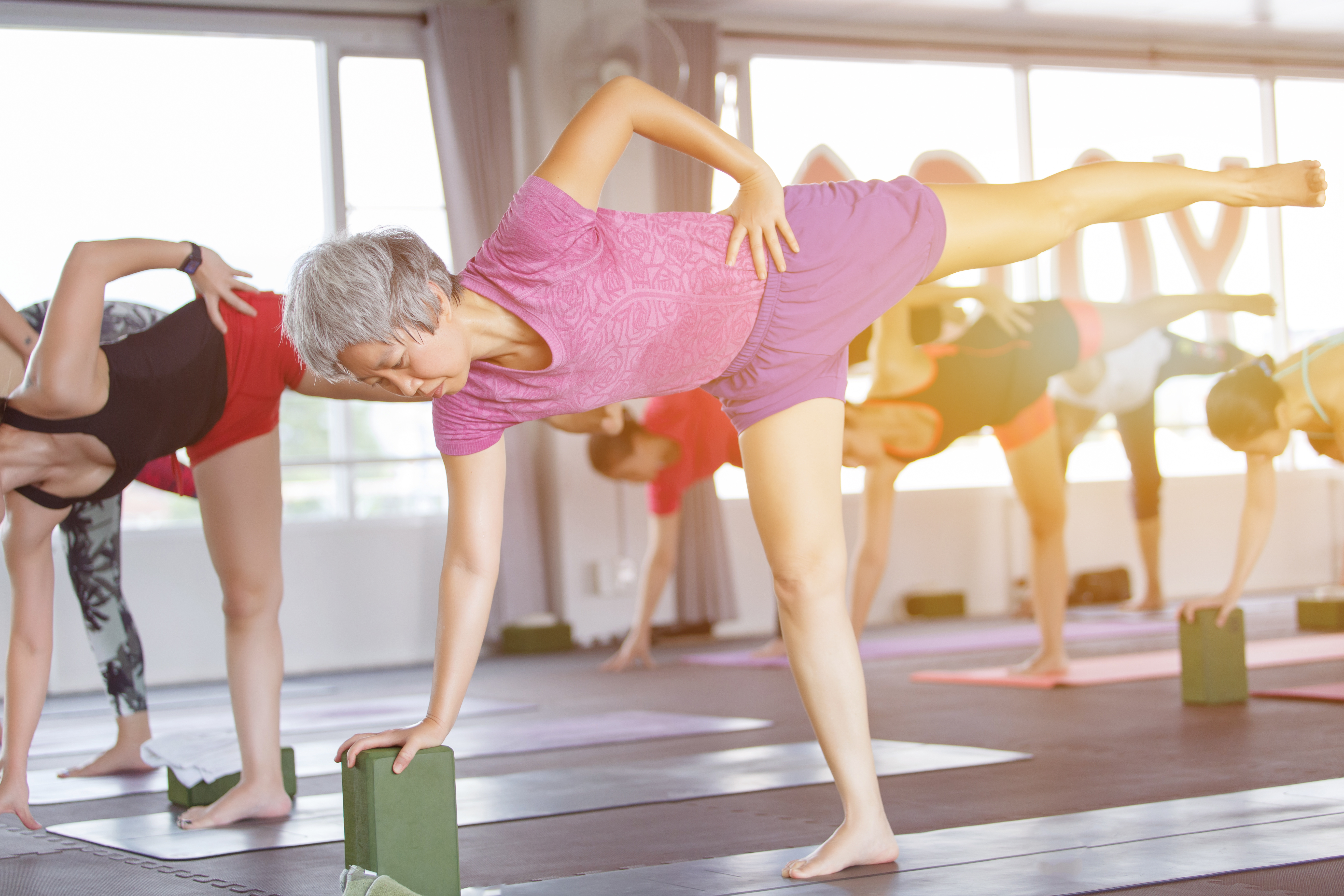
The U.S. Department of Health and Human Services recommends 150 minutes of moderate exercise per week in order to maintain good health. Think of this as five 30-minute workouts, or three 50-minute workouts. Unfortunately, only about one in five American teens and adults get this much exercise.
Even more unfortunately, this recommendation is proving to be a minimum requirement rather than an ideal. A large-scale review published in 2015 (1) found that the ideal amount of exercise to increase your lifespan is approximately three to five times the government-recommended amount. This comes out to between 450-750 minutes of exercise per week, or 75-125 minutes per day, six days per week.
So, that answers the question of how much. The answer to what type of exercise is best is more subjective, but here are some rules of thumb you should go by:
-
Do some weight-bearing activities to maintain your bone density. This doesn’t mean you have to lift heavy weights. Any activity in which your body works against the force of gravity and your feet and legs carry your weight is considered weight-bearing. So this includes walking, running, hiking, dancing, yoga, and playing tennis. Getting older does not mean your bones have to get brittle. Weight-bearing exercise and nutrition are the most important factors in bone density.
-
Do some resistance, body weight, and/or weight-lifting exercises. Building strength and muscular control are essential in keeping your metabolism fast, preventing injuries, and maintaining your balance.
-
Do aerobic activity and plenty of it. Aerobic activities not only burn calories and speed up your metabolism, but they reduce the risk of heart disease, weight gain, diabetes, cancer, depression, anxiety, dementia, and many other conditions.
-
Make sure you’re cross-training or doing varied types of exercise. Do at least three different types of exercise regularly (the more, the better). Cross-training makes you use your body in different ways, and prevents repetitive-use injuries and wear and tear on your joints. Doing different activities also challenges your mind and prevents you from getting bored with your workout routine.
Yoga Tools To Get You There: A well-balanced asana practice can include elements of weight-bearing, muscle toning and strengthening, breath threshold, flexibility, balance, and agility. Work to your capacity. There's no need to eliminate the challenging poses, as long as you know how to modify them to create joint safety and stability. Try pairing your asana practice with another activity, such as aerobic walking or riding a spin bike for a full-body experience.
3. Tame Chronic Muscle Tension With Somatic Movement, Especially Pandiculation. 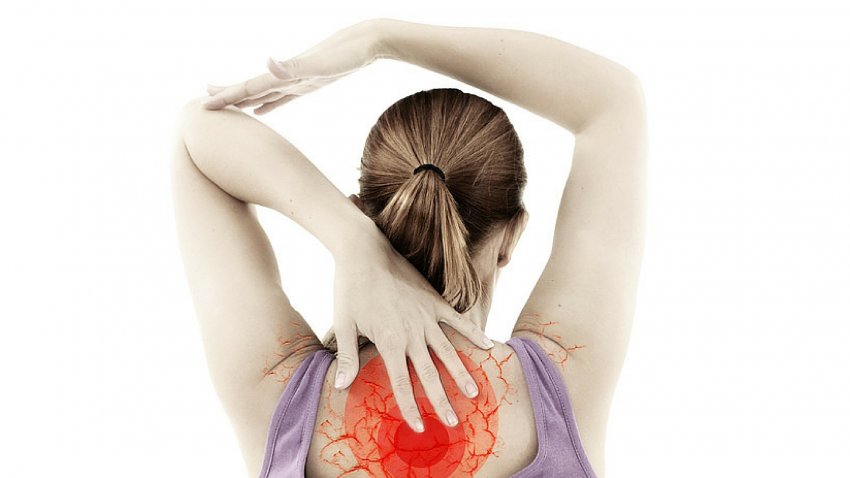
Based on statistics, I know at least a third of you are thinking right now: What if I can’t exercise because I’m in pain?
If you’ve read my blog before, you know that I teach Clinical Somatics, a method of neuromuscular education that releases chronic muscle tension, relieves pain, and restores natural posture and movement. The inspiration for this post came from Thomas Hanna, the founder of Clinical Somatic Education.
Hanna worked tirelessly to dispel what he called the “myth of aging,” which he said is “firmly embedded in modern medicine.” Our doctors believe it, as medical school offers them no other explanation, and we accept it as fact. This myth tells us that our bodies will inevitably break down and that we must experience pain as we age. The myth of aging is so ingrained that few people stop to wonder why this breakdown occurs and if it might be avoidable.
Hanna’s study of neurophysiology taught him that the changes we experience in our bodies as we age, instead of being the result of an inevitable structural breakdown, are, for the most part, a result of learning and adaptation. Our nervous system learns muscular patterns throughout our life, and we gradually build up muscle tension as a result.
This muscle tension makes us feel sore and achy, pulls our skeleton out of alignment and causes poor posture, makes us move in dysfunctional ways, puts pressure on nerves, gradually breaks down our joints, and causes stress and fatigue.
While this buildup of muscle tension is completely normal—it happens to everyone as a result of developing muscle memory—it is avoidable by practicing Clinical Somatics pandiculation exercises.
Anyone who suffers from chronic pain or a recurring injury is quite aware of how much it has affected their ability to be active. But the gradual buildup of muscle tension has an enormous negative effect on our level of physical activity as well, and its role in aging is vastly overlooked—largely because people don’t believe that it’s reversible.
Yoga Tools To Get You There: Bring the pandiculation exercises linked above onto your mat and into your practice. Use them to reset your body, breath, and energy between formal poses. Take gentle movement breaks throughout the day, so tension does not have an opportunity to build.
4. Loosen Up!
As our muscles gradually become tighter, we lose energy. Tight muscles use up energy all the time in order to stay contracted. Chronically tight muscles are one of the main reasons why we feel more and more tired the older we get. When we feel less energetic, we become less physically active, and then we feel less energetic as a result of being less active.
If you’re in pain, you’ve undoubtedly noticed how it affects your mood and stress level. Muscle tension has the same effect, just to a lesser degree. I know when I’m going through a stressful situation, or I don’t have time to take care of myself, my muscles start getting tight, my stress increases, and I am downright grumpy.
Now, since Somatics is the focus of my life, I’m extremely aware of the slightest bit of tension in my body and how it affects me. Unfortunately, I think that for most people, tension builds up so gradually, and they become so accustomed to it that they don’t realize all the ways in which it affects them. In particular, they don’t realize how much their muscle tension affects their mood and stress level, and makes them less energetic and less likely to be physically active.
When Clinical Somatics becomes mainstream and people understand how to release their chronic muscle tension, and prevent and relieve their muscle and joint pain, we’ll see a huge shift in our level of health and quality of life. Not only will the number of people in pain be greatly reduced, but people will be able to be far more physically active throughout their lives. It will become much easier for people to maintain their metabolism, muscle mass, bone density, and body weight, and the rates of lifestyle-related diseases will decrease significantly. We’ll live longer, far healthier lives, simply by releasing our muscle tension.
Yoga Tools To Get You There: Duh, Yoga! All eight limbs practiced with ease and a spirit of Ahimsa (non-violence). For a little extra TLC, seek out a Somatic Yoga Practitioner in your area.
5. Don't Let Stress Build. 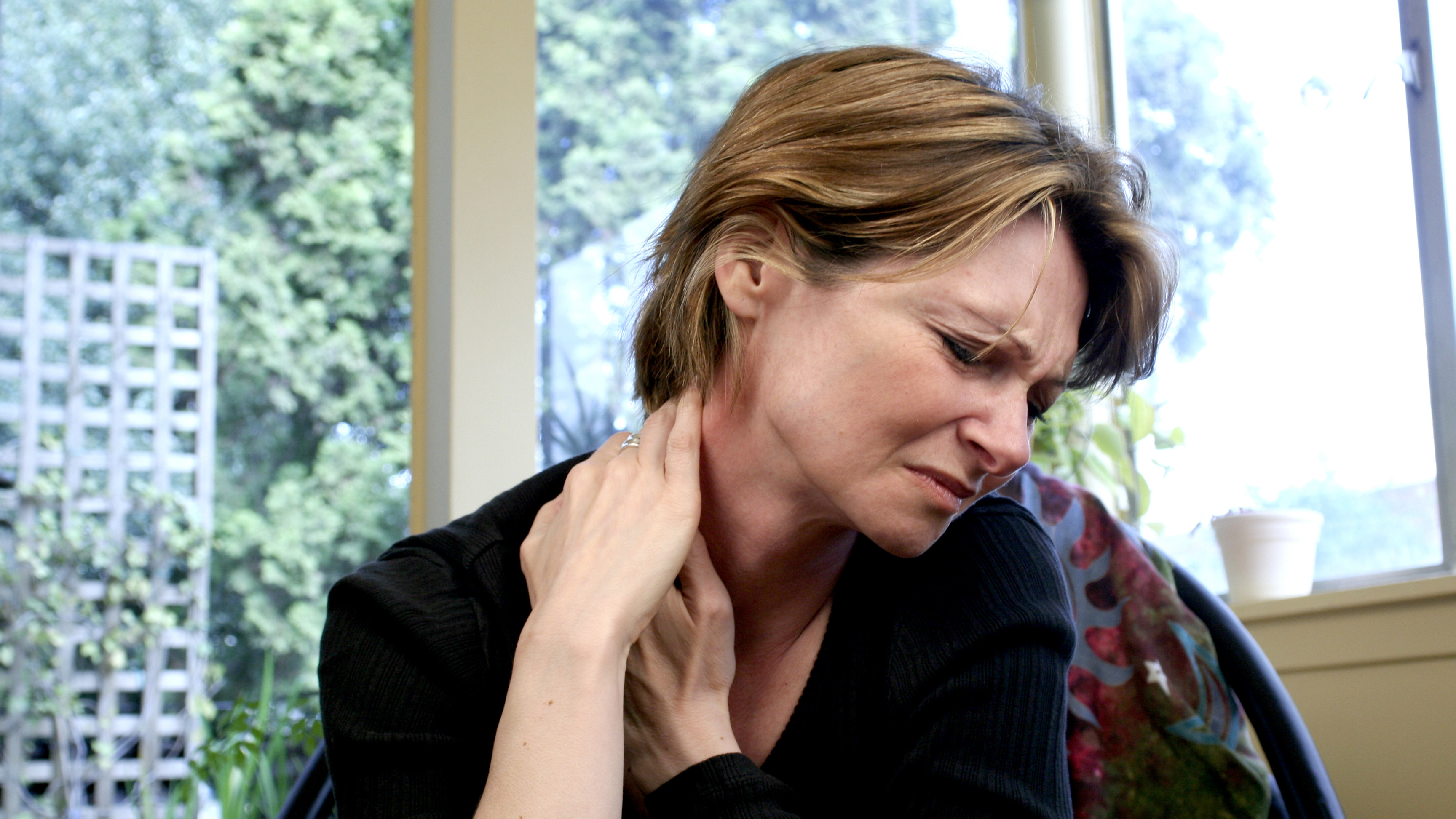
The effects of stress on overall health and the aging process provide enough material for many books—a great one is Why Zebras Don’t Get Ulcers by Robert Sapolsky. I’m going to highlight how stress leads us to become less physically active, speeding up the aging process:
-
Stress makes our body secrete the hormone cortisol, which causes us to store fat around our belly. This is part of our natural, hard-wired response to stress. The body thinks we’re in a life-threatening situation and that we might starve, so it wants to store extra energy. Stress is one of the reasons so many people gain weight around their midsection as they age, and it contributes to the belief that we inevitably gain weight as we get older. Weight gain also leads people to become less physically active, which increases their stress level and causes further weight gain.
-
Stress is one of the most common causes of insomnia, which many adults suffer from. Unfortunately, when we’re tired from not getting enough sleep, we become less physically active. Our sleep patterns become worse as a result, and our stress increases due to both lack of physical exercise and lack of sleep.
-
Stress increases muscle tension and triggers postural reflexes that lead to poor posture. Stress increases muscle tension, and muscle tension increases stress. Stress also triggers the action response and the withdrawal response, making us arch or round our back. Over time, these postures become habitual, causing a host of health problems and shortening our stature.
In addition, stress causes or worsens virtually all lifestyle-related conditions, including heart disease, obesity, cancer, autoimmune conditions, diabetes, anxiety, depression, digestive issues, impotence, and Alzheimer’s and Parkinson’s disease.
Physical exercise is the most effective way to combat stress because it releases and balances out levels of many important hormones and neurotransmitters, including endorphins, which are responsible for “runner’s high.” Exercise also improves our ability to handle future stress because it actually raises the level at which our physiological stress response is triggered. For these reasons, exercise is now recognized as a crucial part of recovery from mood disorders, including anxiety and depression.
So if you tend to avoid exercise because you’re stressed or tired, you’re avoiding the thing that could help you the most. Don’t think of exercise as being indulgent or unnecessary; it is a critical part of reducing your stress and staying healthy as you age.
Yoga Tools To Get You There: Savasana, Guided Relaxation, Yoga Nidra, Restorative Yoga, Soothing Pranayama, Meditation, Chanting, and Ritual are all great tools to put into your stress-busting kit.
6. Get Good Quality Sleep. 
It’s a commonly held belief that as we get older, we need less sleep. This belief arose from the fact that as we age, we tend to get less sleep—and most of us do, as a result of stress, lack of physical activity, sleep apnea, frequent urination, muscle tension, pain, medications, and other health problems.
Research shows that we need the same amount of sleep from our 20s on through the rest of our lives. Between seven and nine hours per night is ideal for the average adult in order to prevent daytime drowsiness.
If you wake up in the middle of the night, don’t let it worry or frustrate you. Waking up after each sleep cycle is completely normal.
Chronic lack of sleep negatively impacts virtually all aspects of our health, including cognitive function, mood, and mental health, immune system function, and sex drive. It leads to obesity, thinning skin, heart disease, stroke, diabetes, and a shorter lifespan.
And as we already know, if we feel tired during the day, we’ll be less likely to exercise and be less active overall. Less activity leads to poorer quality sleep—and the cycle continues.
Yoga Tools To Get You There: Employing Svadyaya - the yogic concept of self-study - can help to determine the underlying cause of sleep issues. Some are lifestyle-related, including creating a calming environment for sleep, following the rules of good sleep hygiene, and creating an evening ritual that guides you gently into sleep. Self-study also includes an awareness that your long-term sleep issue merits medical attention.
7. Regardless of Your Current Age, Start Right Now. 
This has turned into a very long post, and I haven’t even made the most important point yet! So here it is: All of these physiological changes occur as we age because of choices we make, not because of any inevitable physical decline. It is because of the decisions that we make about how to live our lives. Sometimes we’re not aware that we’re making these decisions. And when we are aware, we often feel like we have no choice in the matter.
Are these decisions based on expectations, necessity, or actual desire for how we want to live our lives? Usually, it’s a combination of all three. As adults, we’re expected to support ourselves, so we get a job. Unless you’re able to live for free with your parents or someone else, then you also get a job out of true necessity to support yourself. And hopefully, you choose to get a job that you actually enjoy and get satisfaction from.
For most of us, there is a significant shift in our daily schedule, our stress level, and our expectations for our lifestyle when we begin working full time. It’s this shift that begins the vicious, downward aging cycle.
When we work 40-plus hours a week, the time we have available to exercise is limited. We also have less energy and motivation to exercise, because we’ve been working hard all day. And even if you weren’t very physically active to begin with, working at any type of desk job will likely reduce your overall level of activity. Then there is the social expectation (or perceived social expectation) that your job should take priority over exercise or any type of self-care.
This reduction in physical activity begins the aging cycle: our metabolism slows down, we become less energetic, we gain weight, our stress level increases, our muscles get tighter, and we can’t sleep at night.
Take a moment to consider these questions:
When you began working full-time, did you become less active?
If so, what factors do you think contributed:
Your work schedule
-
Your energy level
-
Your stress level
-
Your personal priorities (wanting to make more money or advance at work)
-
Your expectation that you were supposed to work more at the expense of other things in your life
-
Others’ expectations (or your perception of their expectations)
-
A true need to survive (working more hours in order to make enough money to pay your bills)
8. Find Balance. 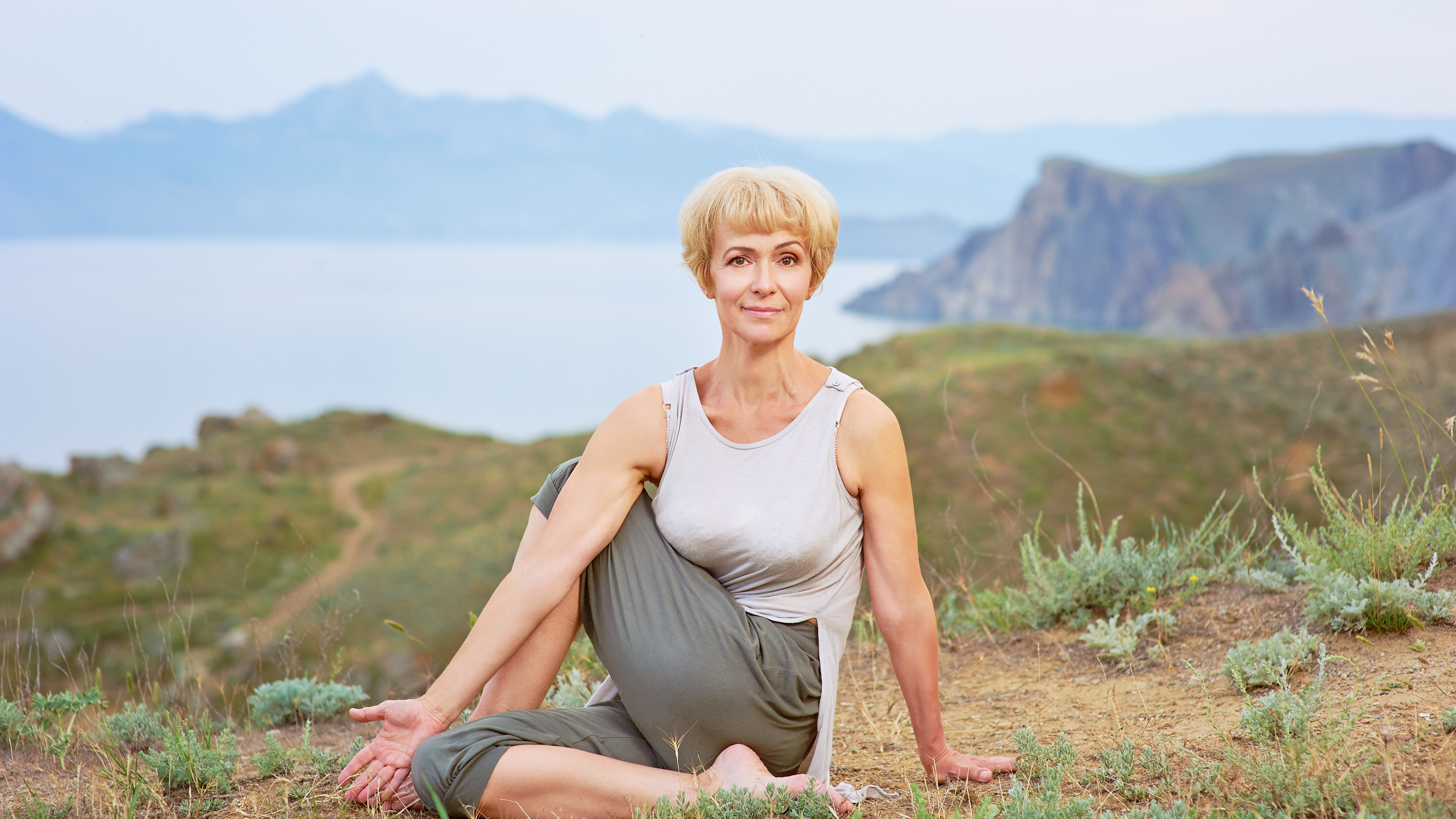
In order for us to remain in optimal health throughout our lives, we have to answer a big question:
How do we find the balance in our lives that allows us to make enough money to support ourselves and our families, spend time with our families and friends, and still prioritize our health?
Is this balance possible, or do we have to sacrifice something? If we’re sacrificing something, why? Are we living according to social expectations, personal priorities, or true need to survive?
Sadly, optimal health is the exception rather than the norm. Our society values money, material possessions, success, work ethic, and even stress over health. The result of our skewed value system is the current state of health in our country, and increasingly, our world: rising rates of obesity, diabetes, cancer, heart disease, mental health disorders, and chronic pain; increasing reliance on medication and surgery to fix our problems; and rising health care costs.
So, what’s actually inevitable about the aging process?
We can’t stop the passing of time, unfortunately. The other inevitable part of aging is that for most of us, we have to make challenging decisions about how we spend our time and how much we want to prioritize our health.
Consider these questions about your own life: 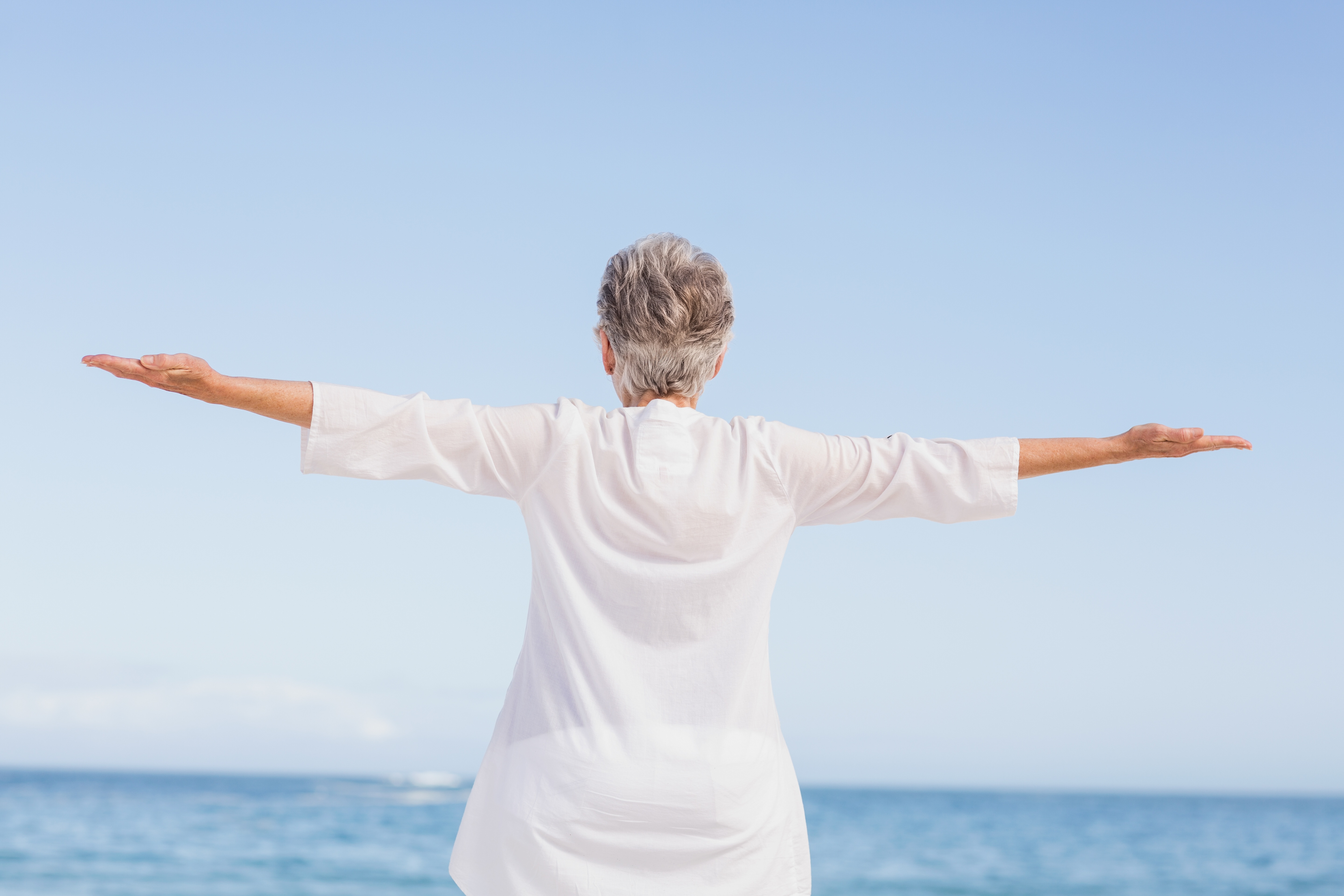
-
How much do you believe is inevitable about your health and aging process?
-
How much do you believe you can control your health and aging process?
-
Is the balance in your life between work, family time, and self-care what you want it to be? If not, close your eyes and visualize your ideal life balance and your ideal level of health. What does your typical day look like? How do you feel?
-
How can you create this ideal balance in your life? Yes, this is the tough part. My advice: Stop making excuses, think outside the box, focus on what’s really important to you, and don’t be afraid to ask for help on this one. You only live once, so taking the time and effort to create your ideal life balance is worth it.
Remember: The myth of aging is just that—a myth. By subscribing to this myth, we perpetuate it.
Also, read Stand Tall: 10 Ways That Posture Affects Your Health from Sarah St. Pierre and YogaUOnline.
Study spine health with YogaUOnline and Tias Little: The Spine as a Sacred Channel - Creating a Body of Light, Vitality, and Energy.
Reprinted with permission from Somatic Movement Center.com
 Sarah Warren St. Pierre is a Certified Clinical Somatic Educator and the author of the book Why We’re In Pain. She was trained and certified at Somatic Systems Institute in Northampton, MA. Sarah has helped people with chronic muscle and joint pain, sciatica, scoliosis, and other musculoskeletal conditions become pain-free by practicing Thomas Hanna’s groundbreaking method of Clinical Somatic Education. Sarah is passionate about empowering people to relieve their pain, improve their posture and movement, and prevent recurring injuries and physical degeneration.
Sarah Warren St. Pierre is a Certified Clinical Somatic Educator and the author of the book Why We’re In Pain. She was trained and certified at Somatic Systems Institute in Northampton, MA. Sarah has helped people with chronic muscle and joint pain, sciatica, scoliosis, and other musculoskeletal conditions become pain-free by practicing Thomas Hanna’s groundbreaking method of Clinical Somatic Education. Sarah is passionate about empowering people to relieve their pain, improve their posture and movement, and prevent recurring injuries and physical degeneration.
Resources
1. https://www.ncbi.nlm.nih.gov/pubmed/25844730
Recommended Reading:
-
Spark by John Ratey
-
The Telomere Effect by Elizabeth Blackburn and Elissa Epel
-
Why Zebras Don’t Get Ulcers by Robert Sapolsky
-
The Pain Relief Secret: How to Retrain Your Nervous System, Heal Your Body, and Overcome Chronic Pain by Sarah Warren, CSE
-
Somatics: Reawakening the Mind’s Control of Movement, Flexibility and Health by Thomas Hanna
Ad box
Featured Courses








